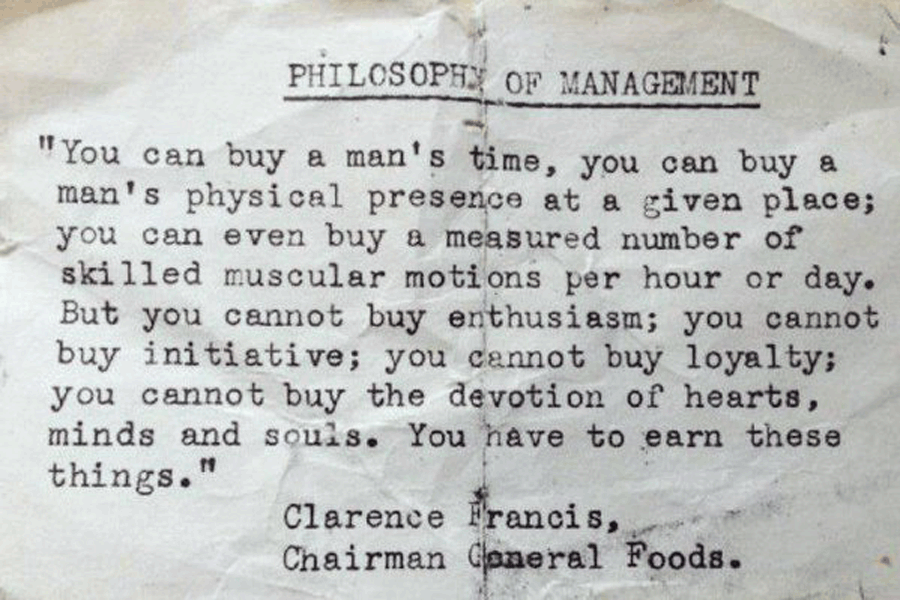[what we first learned in the 80s is that…] Firms that earned superior levels of customer loyalty and retention also earned consistently higher profits–and they grew faster as well….[W]e learned that customer loyalty is inextricably linked to employee and investor loyalty and that major improvements in the one often require improvements in the other two.
— Frederick F. Reichheld of Bain & Company, Inc., in his preface to The Loyalty Effect: The Hidden Force Behind Growth, Profits, and Lasting Value.
…[T]he true mission of a business is to create value. Any business muddled enough to believe that its real purpose is producing profit is probably not long for this world. Profit is absolutely essential, to be sure, but it is a downstream outcome of creating value, and so it functions very poorly as an objective in itself.
— ibid, p. 186.
Reichheld published this book in 1996 — a few years before the “balanced scorecard” entered common parlance. Indeed, “balanced scorecard” appears nowhere in the index, but it seems likely from the above two quotes that Reichheld is on the same wavelength. If you don’t take care of all the stakeholders, you’re not going to be around long.


